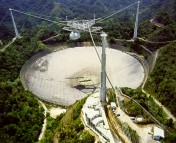This post has been removed. Please see the Astrobites Statement — Reiterating Our Stance on Harassment for more details about this removal.
This post no longer exists.
5 Comments
Trackbacks/Pingbacks
- Ontstaan snelle radiouitbarstingen door ‘boeren’ van donkere materie? | Astroblogs - […] Fuller en Ott hebben berekend dat er gemiddeld één FRB per 100 jaar in een sterrenstelsel plaatsvindt. Op basis…
- Just Space News / The Radio Burp from Dark Matter’s Lunch? - […] Click Here To Read Full Article […]





Thanks for the article, Ashley. I have a few questions which I hope you will answer:
1. “Dark matter particles may scatter off the surface of neutron stars, heat up and sink to the cores.”
How do the particles both scatter off and sink to cores of the neutron stars?
2. When you say “…a black hole which would swallow the neutron star…” and “… black holes which have eaten up all the neutron stars”, are you referring to collapse of a neutron star to form a black hole. Somehow I have difficulty in picturing them as two separate entities (assuming they originated from the same star).
3. “..the neutron star to not radiate away due to Hawking radiation…”
Isn’t Hawking Radiation associated only with certain black holes?
Thanks, again.
Hi Navneeth –
Thanks for the questions!
1. I mean “scattering off” as a colloquial way to say that dark matter particles need to interact with nucleons in the neutron star. This is what allows them to heat up.
2. They are in fact one process! Under this theory, neutron stars are imploding to form black holes. If you’re interested in reading more about the process/theory, this scientific article presents some details: http://arxiv.org/pdf/1405.1031.pdf
3. I’m unfortunately not sure about this question. To the best of my knowledge, scientists believe that Hawking radiation should affect all observable black holes.
I hope this helped!
Thanks.
2. Wow! I didn’t quite realise how incredible, in every sense of the term, this process was.
3. I used ‘certain’ to be on the safer side, but my actual question, which I now see was rather poorly posed, was whether neutron stars too emit hawking radiation, as per the part which I quoted.
Neutron stars (at least, neutron stars without a black hole in their center, which presumably is the vast majority of them) do not have event horizons and so will not emit hawking radiation.
All black holes are (theorized) to have Hawking radiation. However, for solar mass and largerl black holes, the Hawking radiation is tiny and can be ignored, even on 10 billion year time scales. But, a black hole with a mass of ~7 x 10^7 kg will only last about a year, one with a mass of 7 x 10^9 kg will only last a million years, etc.
In this case, they hypothesize small black holes made from a collection of dark matter microparticles, where the formation mass is uncertain. If the formation mass is small enough that the lifetime of the hole from Hawking radiation is < 10^10 kg or so, or this mechanism won’t have the desired effects.
Note, by the way, that this is NOT the same mechanism as the collapse of an overly large neutron star into a black hole. These black holes will initially be much smaller than a proton, and will thus eat slowly, at least in the beginning.